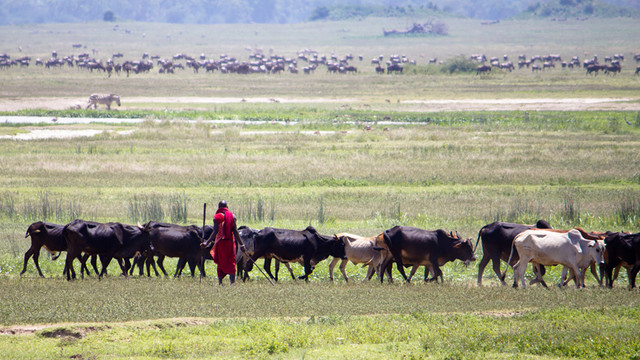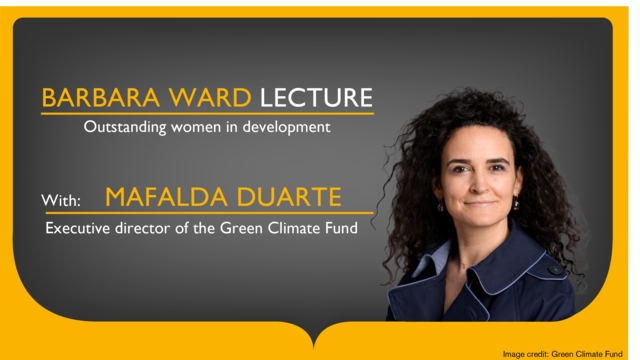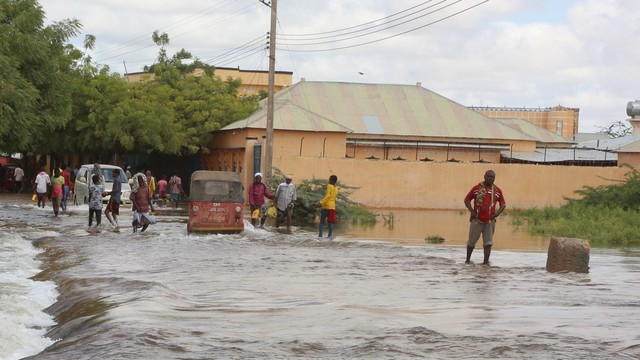Three things climate funds can learn from the COVID-19 response
COVID-19 relief packages have used social protection programmes as vehicles for getting finance directly to those in greatest need; the big climate funders could do the same by investing in these programmes that reach out to the extreme poor.



COVID-19 has shown that risk is multidimensional. For the poorest countries in particular, climate change magnifies all other risks (Photo: michael_swan via Flickr, CC BY-ND 2.0)
For countries already grappling with the impacts of climate change, the COVID-19 pandemic has shown how global shocks and stresses can conspire to further derail decades of development. Now, more than ever, money from key funders such as the Green Climate Fund (GCF) must reach vulnerable communities in these countries; now, more than ever, these funders must make every dollar count.
A hot topic for debate at next week’s London Climate Action Week will be on how green investments and inclusive finance can make the COVID-19 recovery a green recovery. And next year’s UN climate summit (COP26) will seek to negotiate a new long-term climate finance goal, where poorer countries will demand parties raise the climate finance ambition sufficiently, to reduce emissions and adapt to the impacts of climate change.
As we reboot the climate finance debate, what can the big climate funders learn from the COVID-19 response?
Here are three ways that the GCF and other mechanisms can be more effective and strategic about channelling money so people in the poorest countries can manage the impacts of climate change combined with multiple other global risks.
1. Integrate multi-dimensional risks into climate planning and decision making
For climate funds, integrating context-specific climate risks into funding decisions is paramount. But COVID-19 has highlighted the need to recognise that risk, by nature, is multidimensional – from global pandemics to economic shutdowns, natural resource conflicts to infrastructure failures.
Every additional layer of risk is magnified manifold when combined with the shocks and stresses of climate change.
Funders’ decisions need to address these multiple risks. By integrating climate and non-climate risks into funding decisions, climate funds can support the adaptation responses of climate vulnerable countries and help build their long-term resilience. And by recognising multidimensional risk, climate funds can prevent those living in the poorest communities from falling below the poverty line when climate and other shocks hit.
One way would be to fund climate responsive social protection programmes that are designed to help communities cope, adapt, and respond to multiple social and economic risks such as climate change impacts, unemployment, exclusion, sickness, disability and old age.
2. Channel funds through climate responsive social protection programmes and health projects that build resilience of those living in extreme poverty
COVID-19 relief packages have successfully channelled funds – almost 90% (PDF) – directly to individuals and households. Social protection programmes and health projects – helping vulnerable households cope with crises and shocks, find work and invest in their own health and education – have been effective vehicles for getting relief funds into the hands of the most vulnerable.
Social protection measures are also often called upon to support communities living in extreme poverty affected by climate-related shocks.
Climate funds could learn from this approach. By channelling funding via climate-responsive social protection programmes and health projects these funds could provide reliable and predictable finance to the poorest communities, vulnerable to multiple threats and who struggle to recover between frequent shocks.
Changes to the design of GCF would enable climate responsive social protection to be more easily targeted to communities who need it most.
GCF could include social protection as an adaptation response as one of its strategic priority areas. Funds could be ring-fenced as a way of making this change on a short-term basis. The figure below shows the strategic priority areas that receive funding through GCF that could include social protection.

The strategic priority areas which receive funding through GCF, which could include climate responsive social protection (Image: Neha Rai, IIED)
3. ‘New and additional’ finance, that is simple yet ambitious
Many governments’ COVID-19 relief packages were simple and flexible (mostly available as untied grants) and provided vulnerable individuals and households with money to respond to their different situations accordingly. Climate finance, on the other hand, is becoming increasingly complex – beneficiaries are required to comply with more and more rules, harder for poor countries to navigate.
At COP26, discussions on raising the climate finance ambition will continue, including ensuring the finance is “new and additional”— i.e. finance that is over and above development finance. But while this is, as yet, an ambition for climate funders, COVID-19 relief programmes have already put this principle into practice.
In many cases, the money countries provided as part of their response was new and additional to their existing social protection allocations: Japan spent 21.1% of GDP, followed by the United States (13.3%), Australia (10.8 %), Germany (10.7%) and India (10%).
In India the MGNREGS scheme was used as a key vehicle for relief where the budget for the scheme was increased by INR 40,000 crores ($US5.2 billion), over and above the existing INR 61,000 crores ($US8 billion).
While climate change and the COVID-19 pandemic present two very different crises, the responses share the same challenge: getting finance quickly and effectively to those who are in greatest need and exposed to multiple risks. Climate funds have an opportunity to learn from many COVID-19 relief packages that have attempted to meet this challenge.


